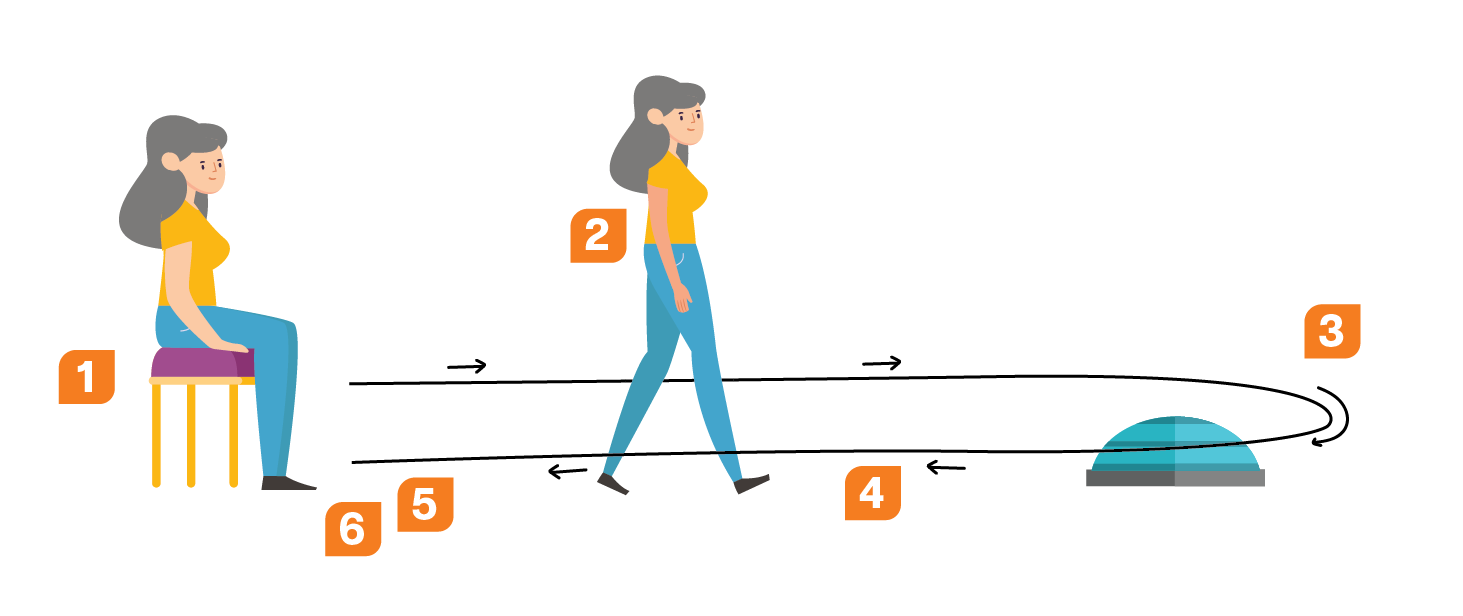Self-analysis materials (e.g., photos, charts, study reports to interpret, questions to think about etc.)
- Read the medical history of the elderly person who has social isolation problems.
- Analyze the evaluation results.
- Consider what you will do with this patient and plan appropriate therapeutic approaches.
Patient: Male, 68 years old, height 178 cm, body weight 80 kg, retired accountant
Diagnosis: – (An elderly person who has social isolation problems and wants to age healthily)
Treatment: Physiotherapeutic treatment such as stretching exercises, calisthenic exercises, cognitive exercises, music therapy and group exercises
Reason for applying to a physiotherapist: An elderly person who has social isolation problems and wants to age healthily.
clinical examination
No pain
Edema: none
Joint range of motion: within normal limits
Time Up and Go Test: Timed Up and Go Test (TUG) can be used to evaluate physical performance. It is the measurement of the time it takes for the elderly person to stand up upon the physiotherapist’s start command while sitting in a chair, walk around a point 3 meters away, and sit down on the chair again. More than 15 seconds is an indicator of risk of falling.
TUG test is a strong mortality predictor, displacing other established risk factors such as chronic diseases in geriatric populations of low and middle income countries.
Our patient completes the TUG test in 13 seconds.

Mini Mental Test: The Mini-mental state examination is used to measure cognitive impairment in older adults. It can be used to screen for cognitive impairment, to estimate the severity of cognitive impairment at a given point in time, to follow the course of cognitive changes in an individual over time, and to document an individual’s response to treatment.
It assesses different subset of cognitive status including attention, language, memory, orientation, visuospatial proficiency.
It has also been recommended for the screening of cognition in depressed patients
The mini-mental state examination is proprietary and takes about 10-15 minutes to administer.
Mini-mental test scores can range from 0-30. Scores of 25 and above are considered normal. A score of less than 10 indicates serious impairment. Scores between 10 and 19 are indicative of moderate dementia. Scores between 19 and 24 indicate early stage dementia.
Our patient’s MMeT score is 27.
The Montreal Cognitive Assessment: MoCA was developed as a rapid screening test for mild cognitive impairment. MoCA evaluates different cognitive functions. The MoCA is a popular screening tool used to determine if cognitive impairment is present. It takes approximately ten minutes to complete. It evaluates visuospatial skills, attention, language, abstract reasoning, delayed recall, executive function, and orientation. The MoCA covers more domains than the MMSE and, as a consequence, has greater sensitivity and specificity. Cognitive assessments are fast, easy-to-use, and accurate ways to help diagnose, evaluate progress, and manage many kinds of cognitive impairments. The MoCA is useful in determining a patient’s level of understanding and ability.
MoCA application takes approximately 10 minutes. The highest total score that can be obtained from the test is 30. Accordingly, a score of 21 points or above is considered normal.
Our patient’s MoCA score is 26.
Summary and recommendations:
Optimal nutrition and physical activity play pivotal roles in promoting healthy aging. Senior individuals are encouraged to adhere to a well-balanced and nutritionally rich dietary regimen that encompasses a diverse array of food items spanning multiple food groups. Furthermore, the inclusion of multifaceted exercise modalities such as aerobic workouts, resistance training, balance enhancement exercises, and flexibility routines within their daily regimen is paramount. This comprehensive approach is instrumental in sustaining the physical and cognitive well-being of seniors, mitigating the onset and progression of various age-related health conditions, and facilitating an active and contented lifestyle in later years.


Leave a Reply
Want to join the discussion?Feel free to contribute!